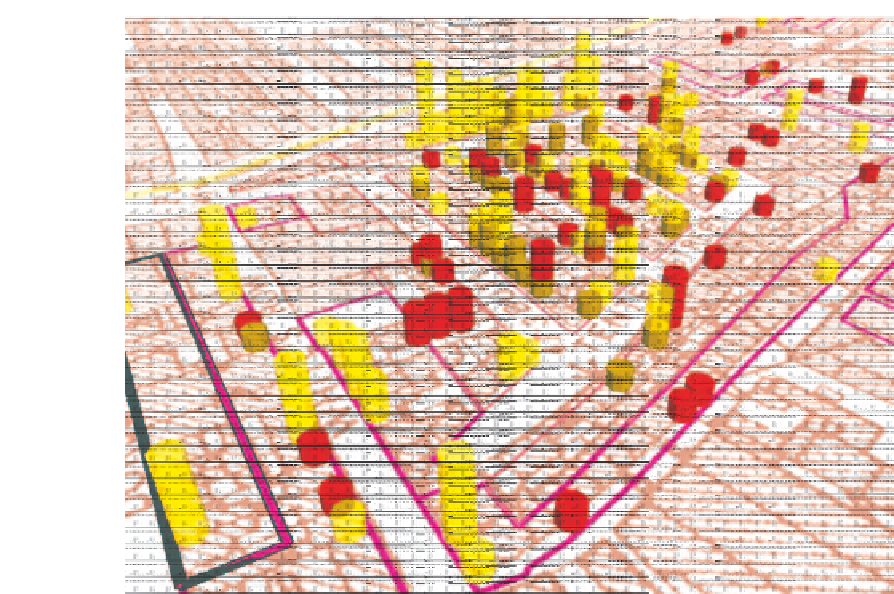Geography Reference
In-Depth Information
Figure 10.5
Use of opaque and semi-transparent symbols to compare the distribution of cigar
makers in the East End of London in 1881 (transparent) and 1887 (opaque) (source: author)
Symbol shadows
When objects displayed in 3D space are viewed from a particular direction, symbol self-
occlusion often makes it difficult to perceive their spatial distribution within the three
axes of that space. One way of providing information about the spatial distribution is to
project object shadows onto one or more planes of a bounding box surrounding the objects.
(Some of the key design issues are discussed in a medical illustration context by Ritter
et al.
,
2003.) An example of this technique is illustrated in Figure 10.6, which shows the distribution
of earthquakes below the Big Island of Hawaii, as viewed from a medium-oblique angle.
The grey base plane displayed below the scene shows the shadows of the 3D earthquake
symbols projected from above, and helps to clarify their distribution in the
x
-
y
plane.
Some studies show, however, that not all 3D tasks are equally enhanced by including object
shadows (Hubona
et al.
, 2000).
Multiple linked views
The occlusion of objects caused by scene complexity sometimes prevents users from com-
prehending the entire visualized scene from a single viewpoint. One potential solution to this
problem is to display the virtual world simultaneously as seen from two or more alternative







Search WWH ::

Custom Search